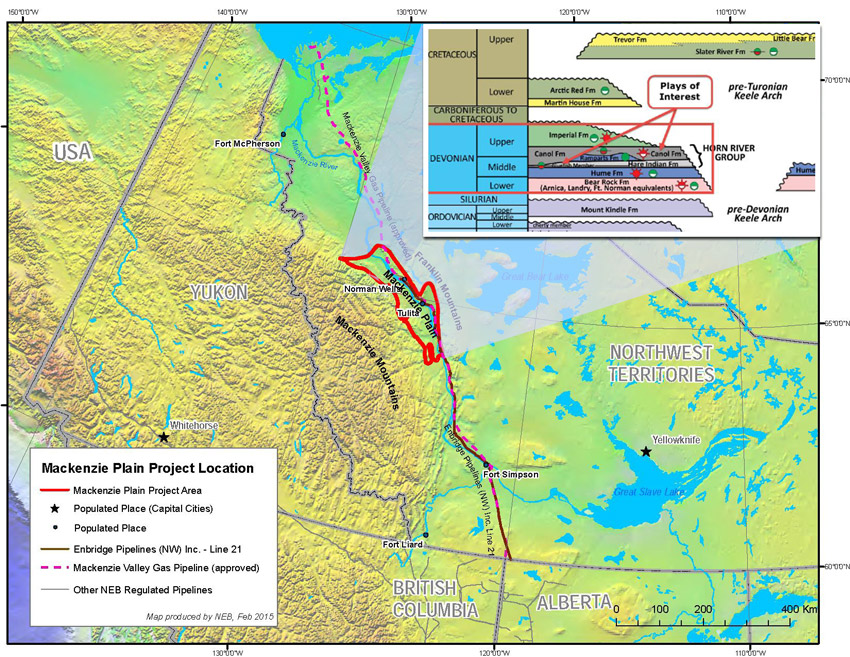Market Snapshot: Large Shale Oil Reservoirs discovered in Mackenzie Plain, NWT
Release date: 2015-05-26
On May 22, 2015 the National Energy Board and the Northwest Territories Geological Survey jointly released the first publically available estimates of unconventional oil-in-place (OIP) resources for the Bluefish Shale and the Canol Shale. These shale plays are in the Mackenzie Plain, located in the Mackenzie Arc exploration region of the Northwest Territories, a recent area of significant industry interest (shown in red on map). The Canol Shale is expected to contain 145 billion barrels of OIP; the thinner Bluefish Shale is expected to contain 46 billion barrels of OIP.
Unconventional oil refers to crude oil trapped within low permeability reservoirs deep below the earth’s surface, from which oil will not flow to a wellbore at economic rates without assistance from technologically advanced recovery processes or stimulation treatments, such as horizontal drilling and multi-stage hydraulic fracturing. Oil-in-place refers to the volumes of oil estimated to exist in a reservoir prior to any extraction.
Due to the uncertainties surrounding the recoverability of the oil in these shales, the assessment provides low, expected, and high case estimates of OIP, as shown in the table below. Only a portion of this will actually be recoverable, and this assessment does not include any estimates of recoverable volumes, due to very limited publicly-available production data.
| Study Area | Low Case - billion cubic metres (billion barrels) |
Expected Case - billion cubic metres (billion barrels) |
High Case - billion cubic metres (billion barrels) |
|---|---|---|---|
| Bluefish Shale | 4.4 (27.6) | 7.4 (46.3) | 11.3 (70.8) |
| Canol Shale | 13.1 (82.6) | 23.0 (144.8) | 35.1 (220.8) |
The closest available comparison in recoverability for the Canol Shale is the Permian Basin of Texas, where operators report expected recovery factors of about three per cent. A cautionary note is that large areas of the Canol Shale are located at much shallower depths than these other shale-oil prospects and the lower pressures might make the recovery of oil more difficult. If it is possible to recover three per cent, the Canol would produce 4.35 billion barrels of oil. Just one per cent recoverability from the Canol Shale would represent a significant marketable resource of approximately of 1.45 billion barrels.
Location of the Mackenzie Plain and
the Generalized Canol/Bluefish Shale Project Area
Figure Source and Description
Source: National Energy Board
Description: The map shows the location of the Mackenzie Plain project area in the Northwest Territories defined with a red line, inlaid in the top right corner of the map shows an intersectional diagram of the shale plays: Canol and Bluefish.
These OIP volumes were calculated using a probability model recently used to assess the oil resources in the Montney Formation of British Columbia and the Bakken Formation of Saskatchewan.
- Date modified:

